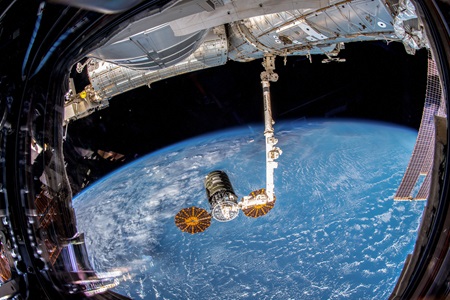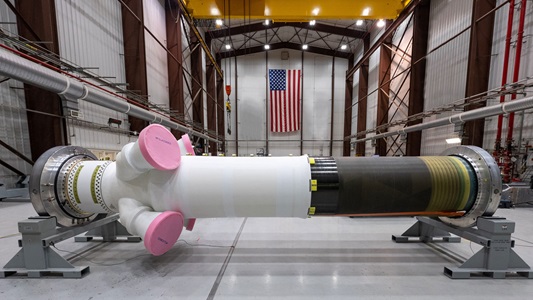The Evolution of Resupplying the International Space Station
From Cargo Delivery System to Science Lab in Space
How Cygnus has evolved to enable critical research on the International Space Station

By Laura Christof Keefe
For over a decade, Northrop Grumman’s Cygnus spacecraft has made life in space sustainable for the crew aboard the International Space Station (ISS) through resupply missions. With its 27 cubic meters of pressurized cargo space — slightly smaller than the volume of a 20-foot U-Haul truck — Cygnus is a multipurpose workhorse, enabling trailblazing science to occur 250 miles above Earth.
We have completed twenty cargo resupply missions, with the next one taking place soon. Resupply and waste removal are the primary mission, but the impact goes far beyond delivery and taking out the trash.

Maximizing the Mission
The first Cygnus mission carried 1,543 pounds of cargo while the last five missions have been much larger, averaging over 8,200 pounds of cargo. For future missions, Cygnus will expand to over 11,000 pounds of pressurized cargo space, increasing the productivity of the missions and opportunity for scientific breakthroughs.
“We are continually looking at ways to be more efficient, both through the build process and in what the spacecraft provides to the customer,” said Scott Duffin, Commercial Resupply Services program manager. “One of those ways is maximizing resource usage by having the vehicle perform multiple functions.”
Once the cargo haul is unloaded by the crew, Cygnus’s job is far from over. The vehicle acts as an extended science lab space for the months it remains docked to the station. And during the NG-17 mission, Cygnus demonstrated a new capability: reboosting the station to keep it in its proper orbit.
“Even the end of Cygnus’s journey has been retooled for different purposes to reduce the need for extra missions,” said Scott. “For example, Cygnus has performed six missions for NASA’s Spacecraft Fire Safety Demonstration Project, which investigates how fires grow and spread in space.”
Today, the technology we pioneered to create Cygnus is being repurposed, like for the Habitatation and Logistics Outpost (HALO) we are building for NASA’s Gateway space station in deep space. The most distant human outpost ever built, this first-of-its-kind module draws upon decades of lessons learned from Cygnus’s mission experience. Cygnus is also evolving for future logistics services for commercial space stations, smoothly transitioning our experienced people and proven technology for new applications, saving on the time and investment that new programs typically demand.

Science on Board
We’re working with NASA and the ISS National Laboratory to ensure safe delivery of critical science experiments to the ISS, including tools to monitor Earth and conduct research to advance life sciences.
“The Cygnus spacecraft is an essential vehicle to ensure NASA and the ISS National Lab continue to utilize our incubator in low Earth orbit to its fullest capabilities,” said ISS National Lab Chief Scientific Officer, Dr. Michael Roberts. “Over the years, Cygnus has delivered hundreds of research projects to the orbiting laboratory, bringing value to our planet through space-based research and technology development.”
For NG-21, Cygnus will carry more potentially groundbreaking science into space, including the Onboard Programmable Technology for Image Compression and Analysis (OPTICA). This technology will produce real-time streaming of ultra-high-resolution imagery from space to Earth, and real-time analysis of transmitted data for observation of time-critical events such as forest fires, methane leaks, oil spills and more.
Cygnus will also deliver materials for the Vascular Tissue Challenge, a project supporting experiments that are engineering and studying liver tissue in microgravity, advancing space-based tissue engineering and potentially leading to the development of new therapies for patients on Earth.
“We’re looking forward to working with the Northrop Grumman team as we continue to push the limits of research and innovation in space,” said Michael.
Resupply and Research
Cygnus has been designed to maximize its impact beyond its primary mission, and we will continue to sustainably evolve its functions to deliver — both for the crew aboard the station and the researchers working to observe and protect our planet.
Want to know more? Learn more about how Northrop Grumman is leading logistics innovation in space, or explore what life is like working at Northrop Grumman. You can also check out our career opportunities to help us do work that’s defining possible.


